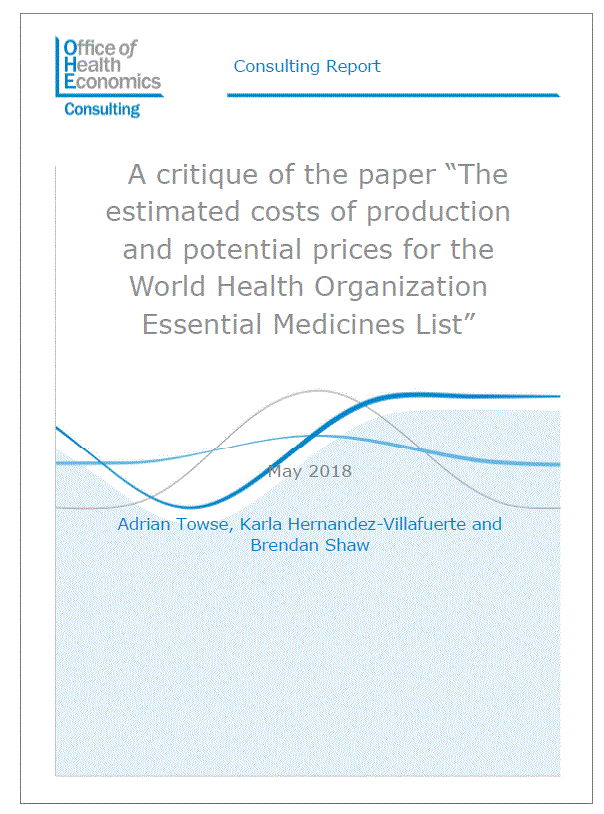This OHE Consulting Report reviews “Estimated costs of production and potential prices of medicines for the World Health Organization Essential Medicines List” (Hill et al., 2018)…
This OHE Consulting Report reviews “Estimated costs of production and potential prices of medicines for the World Health Organization Essential Medicines List” (Hill et al., 2018) in which the authors argue for “greater transparency in drug pricing” and propose generating estimates of the cost of manufacturing essential medicines to inform negotiations on drug pricing.
This OHE Consulting Report reviews “Estimated costs of production and potential prices of medicines for the World Health Organization Essential Medicines List” (Hill et al., 2018) in which the authors argue for “greater transparency in drug pricing” and propose generating estimates of the cost of manufacturing essential medicines to inform negotiations on drug pricing.
This OHE Consulting Report reviews “Estimated costs of production and potential prices of medicines for the World Health Organization Essential Medicines List” (Hill et al., 2018) in which the authors argue for “greater transparency in drug pricing” and propose generating estimates of the cost of manufacturing essential medicines to inform negotiations on drug pricing.
The OHE Consulting Report argues against use of a costing exercise to negotiate generic drug prices irrespective of the quality of the analysis. The implication that prices should be reduced to the level predicted by a model is likely to lead to an increase in generic drug shortages. The Report’s authors state that the way to tackle generic drug prices is through more effective procurement arrangements which brings in competitive global suppliers. More efficient medicines prices may only be achieved by bringing in regional or global suppliers who are more efficient than local producers. Price transparency could help payers understand how effective their generic procurement process appeared to be. However, price transparency also conveys information to suppliers.
Although Hill et al. (2018) set out that 85% of EML drugs are generic, Hill et al. discuss the use of cost estimates and the removal of patent protection in the context of on-patent drugs. However, in many markets some recovery of R&D cost is both to be expected and is necessary. Health Technology Assessment (HTA) is the tool that can inform price negotiation or decisions about use of a product. In some low income markets or for some low income population groups we might expect to see tiered pricing bringing prices close to generic levels. Governments and international organisations could usefully seek to facilitate the use of tiered pricing.
The OHE Consulting Report also critiques the methods used to generate the cost estimates. The model is not a good predictor of price for the three countries Hill et al. (2018) analyse. In India, 47% of medicines have observed prices that are more than 50% below the projected efficient price. In contrast, 78% of the prices observed in South Africa are in the range of three times above or below the estimated prices and around 60% of the medicines included for the UK have prices three times above the estimated price.
The OHE Consulting Report is funded by the IFPMA.

